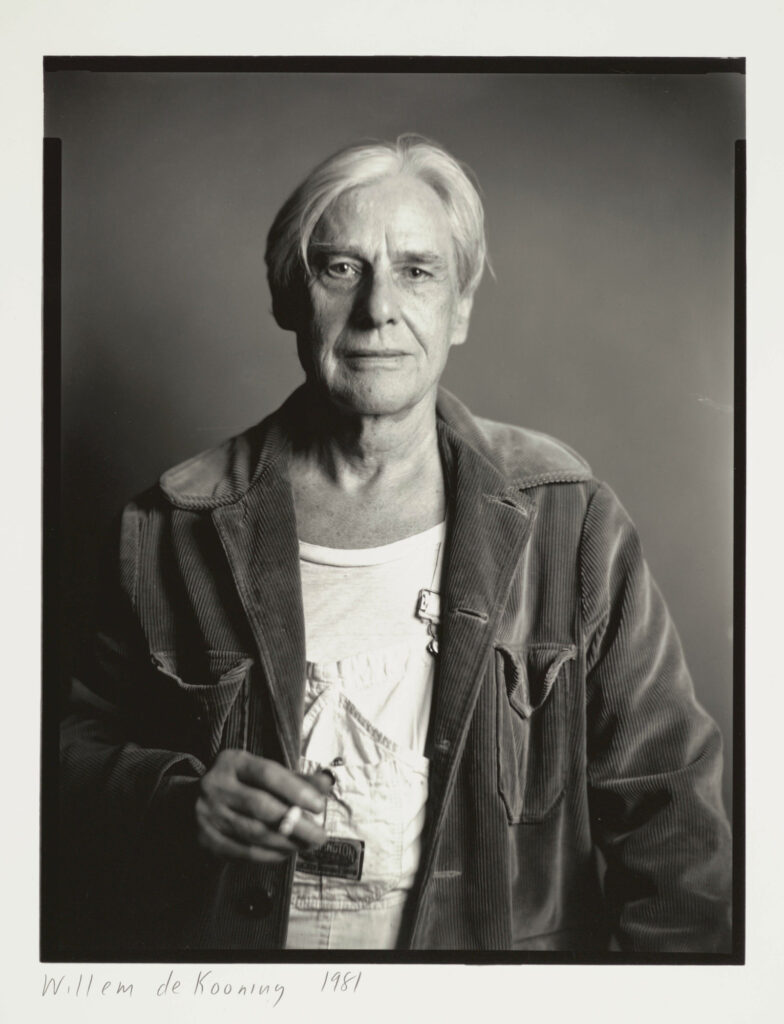Wilhem de Kooning, the legendary artist, left behind a stamp of his painting’s innovative and emotionally loaded style. In his body of work, “Excavation” is a kind of monument, concretizing his interests in form, color, and texture. In 1950 this painting was produced by de Kooning with his typical style, and it will serve as your gateway into the feeling of abstract expressionism as you view it.
Who was Willem de Kooning?

Willem de Kooning, born in Rotterdam in 1904, was a Dutch-American painter whose career covered more than few decades. In 1926, he went to the US, getting absorbed into the lively art society of New York. Shortly associated with the avant-garde artists like Jackson Pollock and Franz Kline, De Kooning started as a figurative painter before he transitioned to abstraction which was and is the hallmark of his artistic legacy.
FUN FACT: Despite facing significant challenges as an immigrant, including financial struggles and a language barrier, de Kooning persevered and eventually became one of the leading figures of the Abstract Expressionist movement in New York City.
His Career

Early in his career, De Kooning achieved notoriety for his figurative paintings which were characterized by bold brushwork and distorted forms. “Woman I” and “Woman II” are the works where he revealed his talent of depicting emotion through expressive and gestural brush strokes. Nevertheless, with the development of art, de Kooning’s style changed too.
In the late 1940s and early 1950s, de Kooning was associated with the Abstract Expressionist movement, an innovative art style that focused on free and emotional expression. It was a turning point in his professional path, and this was followed by the creation of some of his most famous works such as the “Excavation.”
What is Happening in Excavation?

| Artist | Willem de Kooning |
| Date Created | 1950 |
| Medium | Oil on canvas |
| Genre | Abstract Expressionism |
| Period Mid | 20th Century |
| Dimensions | 81 7/8 × 100 1/4 in (208.0 × 254.6 cm) |
| Series / Versions | N/A |
| Where is it housed? | The Art Institute of Chicago, Chicago, Illinois, USA |
”Excavation” (1950) is a dynamic and complex painting that features de Kooning’s abstract style in its purest form. Canvas is a texture of merging lines, shapes and colours creating the feeling of frenzy and movement. Painting is applied in layers with energetic brush strokes which result into a textured surface, giving viewers the opportunity to go deeper into the painting.
At first sight, “Excavation” looks like a confusing cluster of forms with no obvious central focus. Nevertheless, on a closer examination, one can make out traces of some figures and objects which fight a losing battle with the pandemonium and eventually disappear back into the ocean of chaos. It is in the mastery of De Kooning to balance spontaneity with control so that the composition is just on the brink of being abstract and figurative.
The Intricacies of Excavation
Excavation is a mesmerizing study of form and abstraction. The chaotic design allows the audience to immerse into a visual labyrinth, thus evoking an emotional reaction. De Kooning uses of strong colours and expressive brushstrokes create a visual language that express the power and complexity of human experience.
The whirling patches of paint seem to be performing on the canvas breaking away with classical style of depiction. Absence of a definite subject enables alternative readings, asking viewers to fall back upon their feelings and life experiences. This ambiguity is a very characteristic of de Kooning’s abstract expressionism.
Interesting Facts

City Influence: Some art historians suggest that “Excavation” reflects de Kooning’s fascination with the urban landscape of New York City. The chaotic composition and fragmented forms mirror the bustling energy and constant construction of the metropolis.
Mixed Reviews: When “Excavation” was first shown, not everyone liked it. Some people thought it was amazing, but others didn’t understand it. Over time, though, people came to appreciate its beauty and complexity.
New Style: “Excavation” showed a new way of painting for de Kooning. Instead of painting real things, he used shapes and colors to express his feelings. This became a big part of his later work.
Taking Care: Because “Excavation” is old and delicate, it needs special care to keep it looking its best. Experts work hard to make sure it stays in good condition for people to enjoy.
Artwork Spotlight: Trembling Woman

Willem de Kooning’s “Trembling Woman” incorporates raw emotion through the vivid use of brushwork and expressive lines, proving his skill in capturing both movement and vulnerability with his minimumist yet very powerful strokes.
Frequently Asked Questions
Why is Willem de Kooning controversial?
The emotive distortion of the characters in De Kooning’s paintings added to their controversy and contributed to his reputation as a misogynist.
What was Willem de Kooning famous for?
Willem de Kooning was an American painter of Dutch descent who was one of the most prominent proponents of Abstract Expressionism, especially the style known as Action painting. He was born on April 24, 1904, in Rotterdam, Netherlands, and passed away on March 19, 1997, in East Hampton, New York.
Conclusion
The evolution of de Kooning’s style, from figurative to abstract, is evident in “Excavation,” making it a crucial piece in understanding the artist’s creative journey. The ongoing restoration efforts underscore the significance of preserving such masterpieces for future generations, ensuring that the vibrant energy of “Excavation” remains accessible to art enthusiasts around the world.













